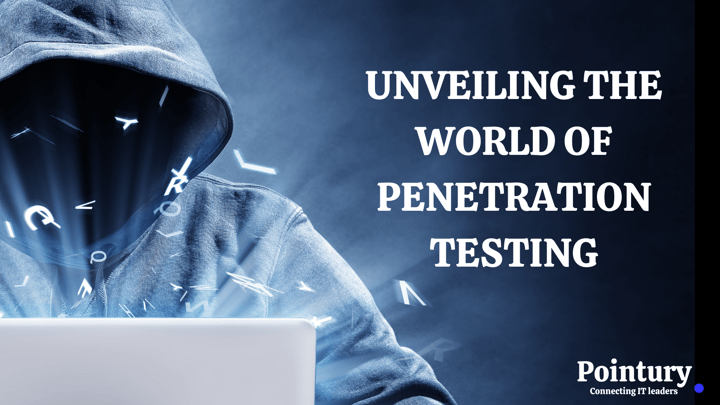UNVEILING THE WORLD OF PENETRATION TESTING

Unveiling the World of Penetration Testing:
Ensuring Digital Fortresses Remain Impenetrable
In today's digital age, where data is often deemed more valuable than gold, ensuring the security of digital assets and information has become paramount. One of the vital tools in the arsenal of cybersecurity experts is penetration testing, also known as ethical hacking. This article delves into the fascinating world of penetration testing, shedding light on its significance, methodologies, and its crucial role in safeguarding digital fortresses.
What is Penetration Testing?
Penetration testing, often referred to as pen testing or ethical hacking, is a proactive approach to cybersecurity. It involves simulating real-world cyberattacks to identify vulnerabilities and weaknesses in a computer system, network, or application. The primary objective is to discover and rectify potential security flaws before malicious hackers can exploit them.
The Importance of Penetration Testing
-
Identifying Vulnerabilities: Penetration testing goes beyond regular vulnerability scans. It simulates actual attacks to discover vulnerabilities that might not be apparent through automated scans.
-
Risk Mitigation: By identifying and addressing security weaknesses proactively, organizations can reduce the risk of data breaches, financial losses, and damage to their reputation.
-
Compliance Requirements: Many industries and regulatory bodies require organizations to conduct regular penetration tests to ensure data security and compliance with cybersecurity standards.
Methodologies of Penetration Testing
-
Black Box Testing: In this approach, the tester has no prior knowledge of the target system, simulating a real attacker's perspective. This method assesses how an external threat might target the system.
-
White Box Testing: White box testing, also known as "glass box" testing, involves full knowledge of the target system's architecture and internal workings. This method is typically used to assess an organization's internal security controls.
-
Gray Box Testing: Gray box testing combines elements of both black and white box testing. Testers have partial knowledge of the target system, allowing them to focus on specific areas of concern.
Stages of a Penetration Test
-
Planning: Defining the scope, objectives, and rules of engagement for the penetration test. This phase also includes gathering information about the target system.
-
Reconnaissance: In this phase, testers collect data about the target system, such as IP addresses, domain names, and network topology. This information is used to identify potential vulnerabilities and attack vectors.
-
Scanning and Enumeration: Testers use various scanning tools and techniques to identify open ports, services, and potential vulnerabilities on the target system.
-
Exploitation: Testers attempt to exploit identified vulnerabilities to gain unauthorized access to the system. This phase mimics the tactics of a malicious hacker.
-
Post-Exploitation: After gaining access, testers assess the extent of the compromise and gather additional information about the system.
-
Reporting: The results of the penetration test are documented, including vulnerabilities discovered, their severity, and recommended remediation steps.
Conclusion
In an era where cyber threats are constantly evolving and becoming more sophisticated, penetration testing serves as a critical defense mechanism. It allows organizations to stay one step ahead of malicious actors by proactively identifying and addressing vulnerabilities in their digital infrastructure.
As technology continues to advance, the role of penetration testing in ensuring the security of sensitive data and critical systems will only become more vital. Organizations that embrace penetration testing as an integral part of their cybersecurity strategy are better equipped to protect their digital fortresses and safeguard the trust of their customers and stakeholders in an increasingly interconnected world.


